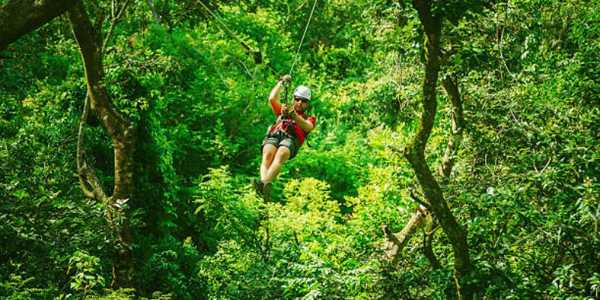Top 7 Water Activities To Try On Your Vacation
Looking for ways to make your getaway unforgettable? Vacation water activities are more than just fun—they create memories you’ll talk about for years. From thrilling snorkeling trips to peaceful kayaking tours, the right experiences on the water can turn an ordinary trip into something truly extraordinary.
Table of Contents
1. Why Water Belongs in Your Travel Plans
2. Top 7 Water Activities
3. How to Choose a Responsible Operator
4. Reading Weather and Water Conditions
5. Traveling Water-Wise: Protecting the Environment
6. Essential Water Kit: Pack Smart
7. Booking Tips: Budget, Timing & Policies
8. Accessibility & Confidence on the Water
9. Capturing Photos & Videos Safely
10. Staying Comfortable: Sun, Wind & Body Care
Why Water Belongs In Your Travel Plans?
Water has a way of switching your brain from "work mode" to discovery. The hush of a bay at sunrise, the rush of whitewater, the weightless glide above a reef—each delivers a different kind of reset. Pick a couple of vacation water activities, and you'll feel it: a calmer mind, stronger memories, and better sleep.
If you’re choosing between snorkeling trips and kayaking tours, think of them as complementary—one reveals the world beneath, the other gives you time to read a coastline like a map.
A Quick Personal-Pace Picker
- Want color and wildlife with low barrier to entry? Start with snorkeling trips.
- Prefer a self-powered glide with room to pause, snack, and explore? Go for kayaking tours.
- After gentle balance and big views? Stand-up paddleboarding fits.
- Crave teamwork and adrenaline? Whitewater rafting or surf lessons deliver.
- Curious about deeper immersion? Try-dives or complete scuba certifications unlock a new realm.
We’ll dive into the details so you can match the right vacation water activities to your mood, budget, and fitness.
Snorkeling Trips: The Easiest Door To The Underwater World
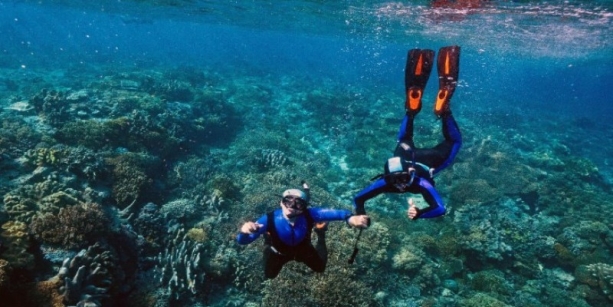
Few vacation water activities are as approachable and rewarding as snorkeling trips. With just a mask, snorkel, and fins, travelers gain access to coral gardens, tropical fish, and sometimes even shipwrecks.
In the Caribbean, islands like Curaçao and Aruba offer shallow reefs where even children can participate. Southeast Asia—Thailand and the Philippines, especially—boasts warm, calm waters where visibility often exceeds 100 feet. For those traveling to the Mediterranean, snorkeling trips are best enjoyed from late spring through early autumn when the seas are clear and warm.
Cost
A half-day group snorkeling trip typically costs between $40 and $80 per person, while full-day tours, including meals and transportation, can range from $90 to $150. Private charters with snorkeling gear typically start at $300 for a small group of up to 6 people.
Requirements
- Basic swimming skills recommended
- Flotation devices usually provided by tour operators
- Snorkeling gear is typically included, though bringing your own mask may improve comfort
- Suitable for beginners, including children with supervision
Booking Tips
Sites like GetYourGuide and official tourism platforms (for example, Go Hawaii) are reliable starting points.
Kayaking Tours: Freedom, Silence, And Hidden Waterways
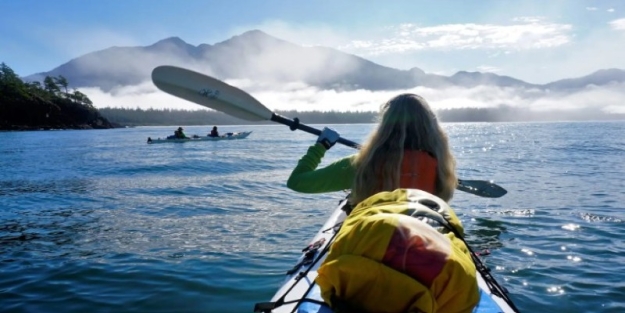
Kayaking tours trade plunges for presence. You slide across glassy lagoons, stitch through Kayaking tours combine exploration and exercise in a way that few vacation water activities can match. Whether it’s weaving through mangroves, exploring sea caves, or drifting past glaciers, kayaking offers a personal connection to the landscape.
Puerto Rico is renowned for its bioluminescent bays, which are most spectacular on moonless nights. Thailand’s Phang Nga Bay allows paddlers to glide under limestone cliffs into hidden lagoons. In Alaska, guided kayak tours bring travelers close to massive glaciers and wildlife, such as seals and sea otters.
Cost
Expect to pay around $30 to $70 for short guided trips. Full-day tours, which include meals or camping options, range from $100 to $150 per person. Specialty tours, such as bioluminescent kayaking, typically start at $60 per person.
Requirements
- No prior experience needed; beginners welcome
- Pre-tour safety briefing provided by guides
- Lightweight, quick-drying clothing is recommended
- Children can usually join an adult in a tandem kayak
- Moderate fitness helpful for longer or multi-hour tours
Booking Tips
Check platforms such as Klook or GetYourGuide. In smaller destinations, local tour outfitters often have the best value packages.
Stand-Up Paddleboarding: Balance Without The Intensity
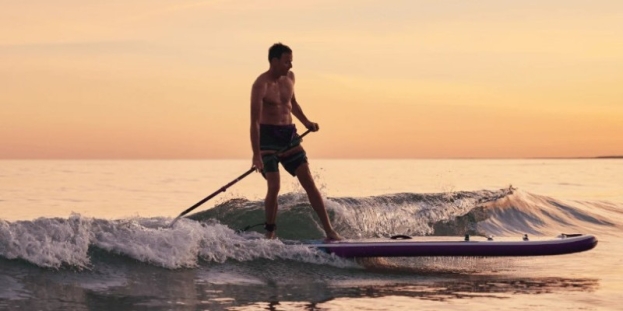
Stand-up paddleboarding (SUP) is an activity that blends leisure with light exercise. Standing on a board gives you a fresh perspective on coastlines, rivers, and bays. Many tours even combine SUP with sunrise yoga sessions, making it a versatile option for wellness-minded travelers.
Destinations such as Hawaii, Bali, and the Florida Keys offer calm, shallow waters that are perfect for beginners. For those who enjoy more adventure, SUP tours on alpine lakes in Europe provide stunning mountain backdrops. The best time is usually summer or early fall when conditions are calmer.
Cost
Board rentals start at $20 to $40 per hour. Guided SUP tours cost between $50 and $90, while yoga-SUP sessions are usually priced around $60 per class.
Requirements
- Basic balance and general water comfort
- Boards are wide and stable, beginner-friendly
- Children can ride with an adult on the same board
- Minimal fitness level required; suitable for first-timers
Booking Tips
Rentals are commonly available at beach clubs, but organized tours can be found through Viator
or local water sports centers.
Day Sails And Catamaran Cruises: Let The Wind Do The Work
For travelers who want to relax without sacrificing adventure, sailing trips and catamaran cruises are the perfect choice. The gentle sway of the boat, combined with the views of open water and distant horizons, makes this one of the most memorable water activities on vacation.
Caribbean islands such as St. Lucia and Antigua are renowned for their catamaran sunset cruises, often accompanied by music and dinner on board. In Greece, day sails around the Cyclades islands allow visitors to hop between beaches and hidden coves. Hawaii offers catamaran tours where dolphins and sea turtles are frequent companions.
Cost
Shared catamaran day cruises typically range from $70 to $120 per person. Private charters typically range from $500 to $1,200 for small groups, depending on duration and inclusions.
Requirements
- No prior skills or fitness required
- Safety instructions provided before departure
- Life jackets available on board
- Comfortable clothing and sun protection are advised
- Great for families, older travelers, or those looking for a relaxing option
Booking Tips
Reliable platforms include Sailo, GetYourGuide, and official tourism websites for sailing hubs like Greece or the Caribbean..
Scuba And Intro Dives: When Curiosity Pulls You Deeper
For travelers seeking a deeper adventure, scuba diving unlocks the marine ecosystems that are beyond the reach of snorkelers. Tropical locations like the Maldives, Belize, and Egypt’s Red Sea provide visibility of up to 100 feet, with encounters ranging from colorful reef fish to majestic manta rays.
Beginners can join “discovery dives” under close supervision, while certified divers explore wrecks, caves, and drift dives. Conditions vary by season: the Caribbean is clearest in winter months, while Southeast Asia is best in spring and early summer.
Cost
Discovery dives for beginners range between $80 and $150 per person. Multi-day certification courses cost $350 to $600. Advanced dives and liveaboard trips may range from $800 to $2,000, depending on duration.
Requirements
- Intro Dives: Basic swimming ability only
- Certification Courses: Several days of training and a medical questionnaire
- Equipment usually provided (mask, fins, wetsuit, tanks)
- Bringing a personal mask or wetsuit may improve comfort
- Not suitable for non-swimmers or those with certain health conditions
Booking Tips
Use PADI Travel for certified dive shops worldwide, or browse LiveAboard.com
for multi-day diving holidays.
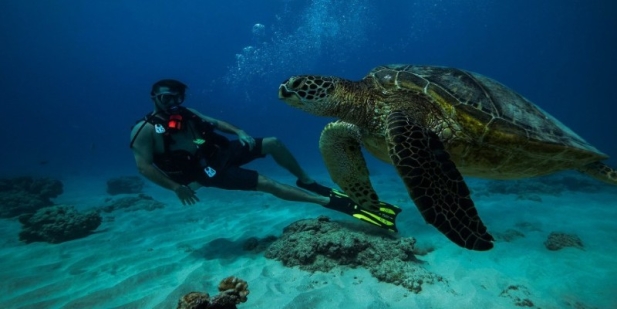
Whitewater, River Floats, And Canyons: Freshwater Thrills
Not all vacation water activities happen in the ocean. Rivers offer a range of experiences, from calm floats to thrilling whitewater rapids. For families, gentle river tubing in places like Texas Hill Country or Slovenia’s Soča River is an easy way to enjoy nature. For adrenaline seekers, Class III–V rapids in Colorado, New Zealand, or Costa Rica deliver heart-pounding excitement.
The best seasons depend on snowmelt and rainfall. In North America, spring through mid-summer is prime for rafting. In the Southern Hemisphere, the rafting season peaks from November to March.
Cost
Half-day river rafting tours typically cost between $50 and $90 per person. Full-day adventures with meals included usually run $100 to $150. Private canyon rafting trips can exceed $500 for groups.
Requirements
- Basic swimming ability generally required
- Age limits vary depending on river difficulty (check with operator)
- Gear Provided: helmets, life jackets, paddles
- Moderate fitness required for Class III+ rapids
- Suitable for families (on calm floats) and thrill-seekers (for rapids)
Booking Tips
Use Viator for popular U.S. and European rivers. Local outfitters in adventure destinations like Costa Rica or New Zealand usually offer direct booking with detailed itineraries.
Surf Lessons And Bodyboarding: Learning Wave Timing
Surfing is more than just a sport; for many, it’s a cultural experience. Beginners can start with surf lessons where instructors guide them through balance, paddling, and catching waves. For those wanting a more accessible option, bodyboarding provides the thrill of riding waves without the need to stand up.
Destinations like Hawaii, California, Bali, and Australia are renowned for their legendary surf hubs, offering year-round lessons and surf schools catering to all skill levels. Beginners should aim for smaller waves in the summer months, while advanced surfers often seek the bigger winter swells.
Cost
Group surf lessons cost between $40 and $80 for a two-hour session. Private lessons range from $90 to $150 per hour. Bodyboard rentals typically cost $10 to $20 per day, while surfboard rentals are $20 to $40.
Requirements
- Comfort in the water is essential
- No prior surfing experience needed for beginner lessons
- Surf schools provide boards, wetsuits, and safety instruction
- Bodyboarding requires less balance and is more accessible for younger or older travelers
Booking Tips
Look for certified schools on GetYourGuide or through local surf camps. In top surfing destinations, official tourism boards often list reputable surf schools.
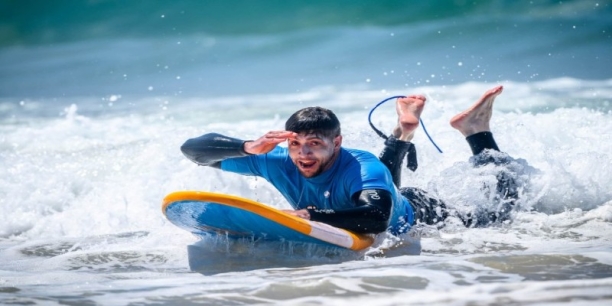
How To Choose A Responsible Operator ?
Strong marketing can hide weak safety. Here’s how to vet tours without becoming a detective.
Look For Safety Layers
Life jackets in the right sizes, spare radios, first-aid and oxygen kits on boats, and pre-trip briefings you can actually hear. For boating standards and gear basics, the U.S. Coast Guard's recreational guidelines are a reliable reference, USCG Boating Safety.
Ask About Ratios And Contingencies
How many guests per guide in the water? What's the wind, wave, or lightning cutoff? Is there a support boat on longer routes? Operators who answer calmly and specifically are the ones you want to work with.
Read Recent Reviews With Skepticism
Is praise about wildlife and scenery (which operators don’t control) or about briefings, gear condition, and staff responsiveness (which they do)?
Insurance And Permits
Licensed guides know their local rules. If you're inside national or state parks, permits should be displayed. The U.S. National Park Service also publishes general water-safety advice worth skimming before your trip: NPS Water Safety.
Reading Weather And Water Like A Local
Most mishaps are really mismatches—plans that ignore wind, swell, tide, or storm cells. Keep it simple:
- Wind under 12–15 knots and small, organized swell typically result in comfortable sea paddling and fair snorkeling conditions.
- Onshore wind (blowing from sea to land) builds chop quickly in the afternoon, schedule snorkeling trips for early in the day.
- Rivers rise after rain; outfitters may bump your section to a safer stretch. Trust them.
For beach conditions, NOAA's surf and rip-current pages translate jargon into actionable steps, as outlined in NOAA Rip Current Safety. For coastal wind and wave zones, see the marine forecast linked above. If you're unsure about water quality after storms, the CDC's Healthy Swimming hub guides what to look for and how to minimize the risk.
Traveling Water-Wise: Protecting The Places You Came To See
Every fin kick and paddle stroke matter in fragile environments. A few habits keep your footprint light:
Wear sun shirts and brimmed hats to use less sunscreen; when you must apply, choose reef-friendly formulas and let them absorb before entering the water. Float over, don't stand on, living reef. Pack out every crumb and wrapper from riverbanks and sandbars. Give wildlife extra room during mating, nesting, or molting seasons. Read up on coral symbiosis and stressors through NOAA to understand why these systems are so sensitive, NOAA Coral Reefs.
Small choices keep vacation water activities open and thriving for the next traveler—and for your next visit.
Pack Once, Play Often: A Smarter Water Kit
You don’t need a closet of gear to enjoy vacation water activities. A compact kit covers most scenarios:
A 20–35L dry bag; lightweight microfiber towel; polarized sunglasses with retainer; brimmed hat; long-sleeve UPF top; quick-dry shorts; water shoes for rocky entries; a compact first-aid pouch; reusable bottle; and your phone in a certified waterproof pouch. Add motion-sickness tablets if boats aren’t your happy place.
For snorkeling trips, bring your own low-profile mask if you’re picky about fit. For kayaking tours, padded fingerless gloves prevent hotspots on longer days. Label everything—boat decks and beach vans swallow look-alike gear.
Booking Without Regret: Budget, Timing, And Fine Print
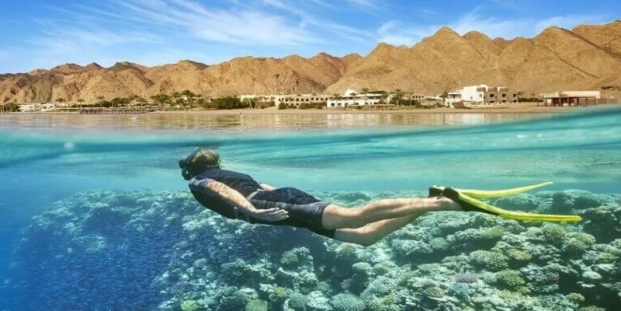
Prices swing with demand, distance, fuel, and headcount. A few rules help:
Book Marquee Days (Weekends and Holidays) Early; schedule weather-sensitive snorkeling trips for the mornings and keep a flexible backup plan. Compare True Inclusions: hotel pickup, park fees, wetsuits, snacks, and high-quality safety gear. Confirm cancellation windows and weather policies in writing to ensure clarity and understanding. If you're stacking activities, mix high-effort days with low-effort ones to avoid "burnout by day three."
Traveling during the shoulder season reduces crowds and costs, and cooler water is often clearer—another reason to opt for morning snorkeling trips.
Accessibility And Confidence On The Water
Many operators now offer adaptive seats for kayaking tours, snorkel vests with extra buoyancy for nervous swimmers, and step-through boarding for catamarans. Ask about beach wheelchairs, transfer assistance, and quiet-water alternatives to ensure everyone in your group gets time on the water. Remember: the best vacation water activities are the ones everyone can share.
Photo And Video Without Losing The Moment
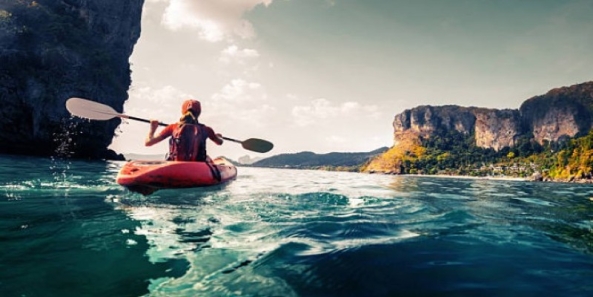
Secure lanyards on small cameras and phones. Rinse housings in fresh water after exposure to salt. For vibrant underwater shots on snorkeling trips, get close, shoot slightly upward, and stay still for two seconds. In kayaks, keep your cameras in a deck bag that you can open one-handed and always clip them in securely. Record fewer, longer clips instead of dozens of tiny ones—you'll actually edit them later.
Build A Balanced Week (Without A Rigid Itinerary)
You asked for experiences, not a spreadsheet. Here’s a simple rhythm to keep energy high: alternate effort and ease. Pair morning kayaking tours with a restful beach afternoon. Follow a surf lesson day with a lazy sail or lagoon float. Anchor your week with one “wow” moment—reef snorkeling trips, canyon raft, or bioluminescence paddle—and let everything else orbit around it.
Mastering The Fundamentals: The Small Skills That Change Everything
The difference between a stressful outing and a silky-smooth day on the water often comes down to a few small skills—none of which require athletic heroics. Think of them as travel-size techniques you can pack in your head.
Breath And Buoyancy
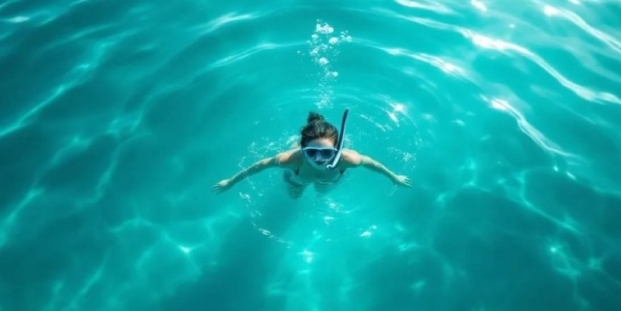
In salt water, you float more than you expect, in fresh water, slightly less. If your chest feels tight at first contact, exhale fully, then take slower, deeper breaths. Tension in your neck and shoulders makes you sink—relax and lengthen through your spine. In masks, avoid smiling (it can break the seal); if water sneaks in, press the top frame and blow gently through your nose to clear it.
Fin Finesse
On the surface, kick from your hips with long, easy strokes. Bending at the knees creates splashy “bicycle kicks” that go nowhere and stir sand onto reefs. In shallow entries, keep fins in your hand until you’re waist-deep to avoid stumbles and broken straps.
Paddle Posture
Your core is your engine. Sit tall, soften your elbows, and rotate your torso; your arms are just hooks. Keep the paddle shaft vertical near the boat for stronger strokes and better tracking. In light wind, shorten your stroke and increase cadence—little moves, more often.
Boat Balance
Stability increases with calm movements and low centers of gravity. In the first few minutes of a tour, stay seated and feel how the hull responds. Then, try small edge leans. If someone stands abruptly, say "coming up" so the group can brace. In a capsize, reach across to the far side of the overturned kayak to flip it—then re-enter from the stern or with a guide's help.
Reading The Surface
Look for texture changes: cat’s-paw ripples show light puffs; darker lanes (“wind lines”) signal more breeze. Glassy water usually sits behind headlands or mangrove edges; small, steep chop comes with opposing wind and current. In surf zones, sets come in pulses—count waves and go on a lull rather than sprinting blindly.
None of these is complicated. Practice once at the start of your trip, and you'll move like you've been doing this for years.
Sun, Wind, And Body Care: Stay Comfortable To Stay Out Longer

Salt, sun, and wind sap energy faster than even the most intense gym workouts. Plan comfort proactively so you can enjoy a second or third day on the water.
Hydration And Electrolytes
Drink before you’re thirsty. On boats or long paddles, sip every 15–20 minutes. In hot climates, supplement water with a pinch of electrolytes to ward off cramps and headaches. Avoid heavy, sugary drinks right before a swim—they can upset stomachs in choppy water.
Food That Behaves
Choose compact, low-mess snacks, such as oranges, nuts, dates, firm granola, and small sandwiches wrapped in wax paper. Greasy meals plus swell equals’ regret.
Skin And Eyes
Broad-brim hats, UPF shirts, and zinc-based sunscreens protect against the need for constant reapplication. Polarized sunglasses cut glare, allowing you to spot shoals, turtles, and submerged rocks more easily. Secure them with retainers—boat slips swallow eyewear.
Motion Management
If you're sensitive, take your medication as directed on the label one hour before boarding. Mornings are calmer; choose a spot with a clear horizon view, breathe slowly, and avoid areas with diesel exhaust. Ginger chews help some travelers.
Thermoregulation
Wind steals heat even in the tropics. Bring a light layer for boat rides and a compact towel for evaporative chill after swims. In cold-water destinations, a thin neoprene vest worn under a rental wetsuit adds warmth without bulk.
A comfortable body notices more wildlife, learns skills faster, and ends the day with a sense of accomplishment, often saying, "Let's do that again."
Bringing Kids, Elders, And First-Timers: Make It Easy To Say “Yes”
The best memories are those that are shared. A few tweaks help everyone feel safe and included.
For young kids, pick short outings with calm water and frequent shore breaks. Choose operators with child-sized life jackets, small masks, and patient guides; ask about beach entries instead of deep-water boat jumps. Give them ownership—a small dry bag for their snack and towel, and a whistle they can practice with (under specific rules).
For older travelers, stable craft and easy boarding matter more than speed. Catamaran day sails, wide sit-on-top kayaks, and gentle lagoon floats are ideal. Ask about handrails, step-through ladders, and shaded seating. Schedule the most active day early in the trip, when energy levels are highest and jet lag has subsided.
For nervous swimmers, buoyancy is a source of confidence. Snorkel vests, pool noodles, tow floats, and a guide-held life ring transform "maybe" into "absolutely." Start in waist-deep water; simply breathing through a snorkel while kneeling is a win that unlocks the rest of the experience.
Getting Started With Your First Water Adventure
Choose one calm session for day one, book with a safety-forward operator, and pack a tiny water kit you can carry with one hand. That’s it. The rest unfolds on its own moments of awe, a few good laughs, and a highlight you’ll talk about long after your suitcase is unpacked.
Was this helpful? Share your thoughts
- Learned practical methods
- Solved my questions
- Inspired new ideas
-
![7 Ways To Get Free Hotel Stays On Your Next Vacation]() 7 Ways To Get Free Hotel Stays On Your Next Vacation
7 Ways To Get Free Hotel Stays On Your Next Vacation -
Hotel stays can eat up a big part of your travel budget. But with the right strategies, you can cut those costs — or even stay for free. Whether you’re planning a weekend getaway or a long overseas trip, here are seven proven methods to secure complimentary nights and stretch your travel budget further.
Explore More
-
![5 Best Ziplines In Costa Rica Rainforest: Prices & Tips]() 5 Best Ziplines In Costa Rica Rainforest: Prices & Tips
5 Best Ziplines In Costa Rica Rainforest: Prices & Tips -
Costa Rica draws adventure seekers from around the globe with its dense rainforests teeming with life, where ziplining offers a front-row seat to nature's spectacle. This activity lets participants soar above treetops, spotting monkeys and exotic birds while feeling the rush of wind through lush greenery. The country's rainforest ziplining stands out for its combination of thrilling heights and immersive wildlife encounters, making it a top choice for those seeking both excitement and connection to the environment.
Explore More

